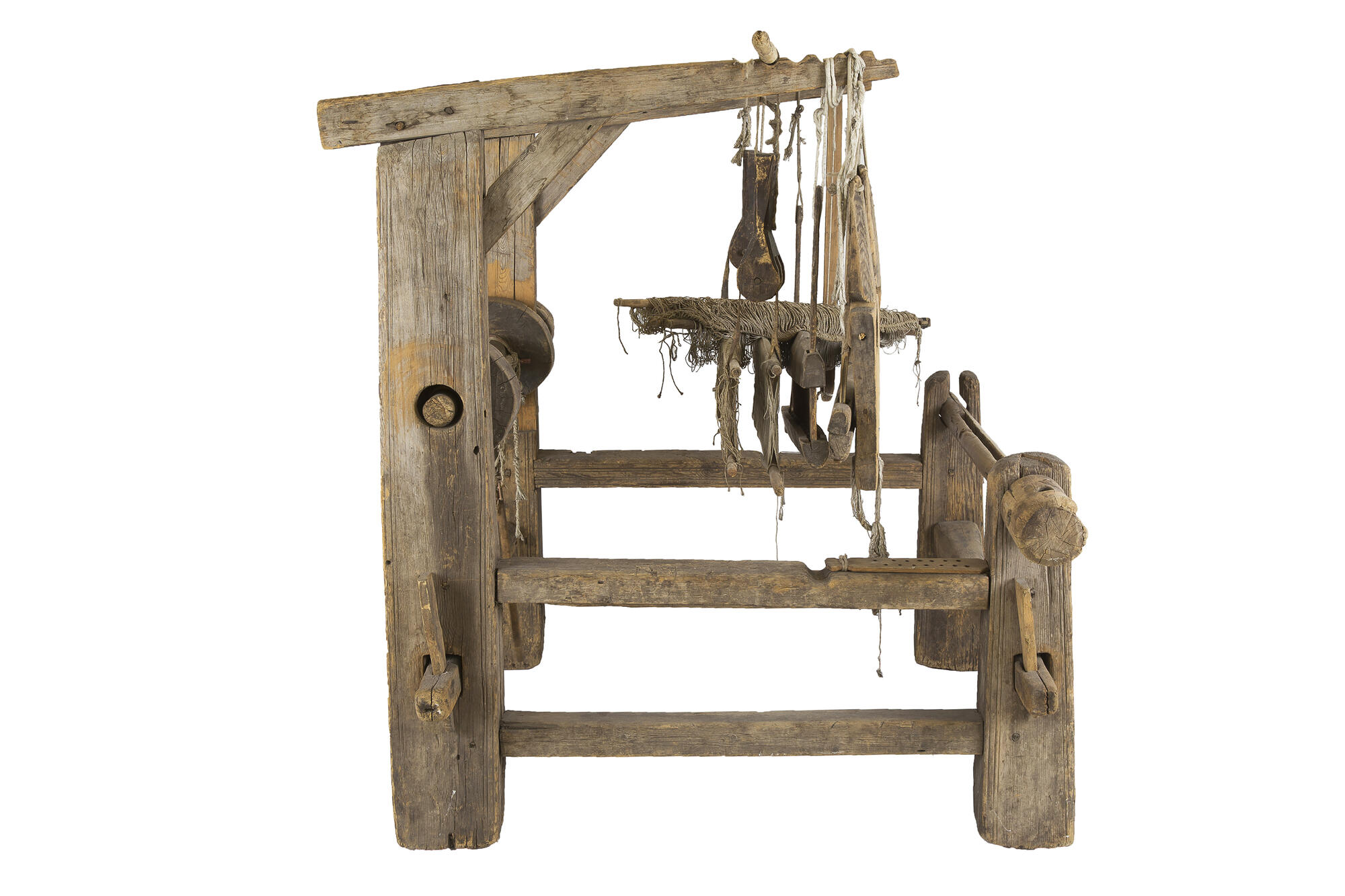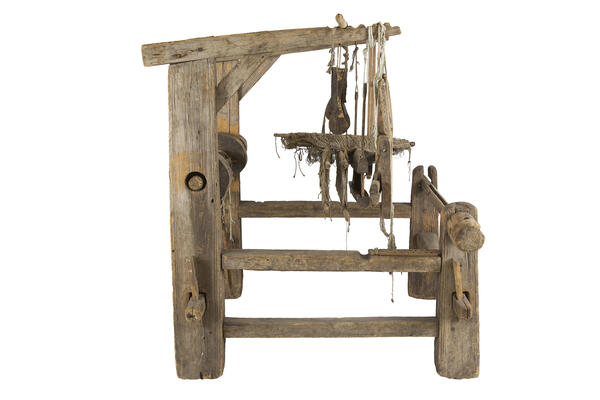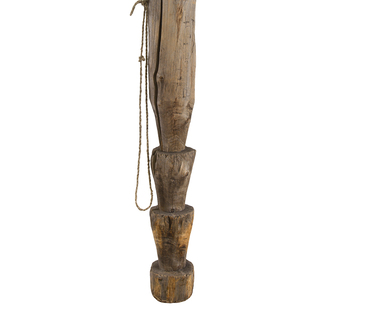The Transbaikal Regional Museum of Local Lore displays everyday household items and costumes of the Semeiskie — a community of Old Believers that were exiled with their families from Europe to the Transbaikal area in the 18th century. The museum houses a wooden loom which was made in the early 20th century and belonged to local Old Believers.
The Semeiskie were relocated to the east of the country in big groups and brought all their possession with them. They founded several localities and villages there. The Transbaikal Old Believers managed to preserve their traditions thanks to their isolated way of life.
Before the resettlement, the Semeiskie grew and processed flax. However, this crop could not withstand the harsh Siberian climate, so craftswomen started to use hemp for handiwork. Its coarse threads were used to make materials for bags and clothes.
The Semeiskie used to grow only one variety of hemp with stems up to one and a half meters high. It was collected, dried in sheds and then women manually formed threads from it.
Researchers noted that over the centuries the Semeiskie continued to call hemp flax. The term has been used when the ancestors of Old Believers cultivated flax on the territory of Poland.
Fabrics that were produced using looms were called handloom fabrics. In the late 19th century and early 20th century, looms stood in almost all izbas (traditional dwellings) of the Semeiskie. They usually used the ones where warp threads were placed horizontally. They were equipped with treadles — foot pedals that raised and lowered the canvas for the fabric.
The Semeiskie used various weaving techniques. The most popular one was the plain weave where transverse threads were placed perpendicular to the base.
With a handloom, it was possible to create several types of weaves and patterns on the material simultaneously. Some craftswomen used multi-colored threads for the base and an additional layer so that the fabric was in large and small checks — it was called “pestryad”, or molted fabric.
Thanks to these looms and other equipment for knitting and weaving, researchers managed to thoroughly examine traditional crafts of the Semeiskie.
The Semeiskie were relocated to the east of the country in big groups and brought all their possession with them. They founded several localities and villages there. The Transbaikal Old Believers managed to preserve their traditions thanks to their isolated way of life.
Before the resettlement, the Semeiskie grew and processed flax. However, this crop could not withstand the harsh Siberian climate, so craftswomen started to use hemp for handiwork. Its coarse threads were used to make materials for bags and clothes.
The Semeiskie used to grow only one variety of hemp with stems up to one and a half meters high. It was collected, dried in sheds and then women manually formed threads from it.
Researchers noted that over the centuries the Semeiskie continued to call hemp flax. The term has been used when the ancestors of Old Believers cultivated flax on the territory of Poland.
Fabrics that were produced using looms were called handloom fabrics. In the late 19th century and early 20th century, looms stood in almost all izbas (traditional dwellings) of the Semeiskie. They usually used the ones where warp threads were placed horizontally. They were equipped with treadles — foot pedals that raised and lowered the canvas for the fabric.
The Semeiskie used various weaving techniques. The most popular one was the plain weave where transverse threads were placed perpendicular to the base.
With a handloom, it was possible to create several types of weaves and patterns on the material simultaneously. Some craftswomen used multi-colored threads for the base and an additional layer so that the fabric was in large and small checks — it was called “pestryad”, or molted fabric.
Thanks to these looms and other equipment for knitting and weaving, researchers managed to thoroughly examine traditional crafts of the Semeiskie.



